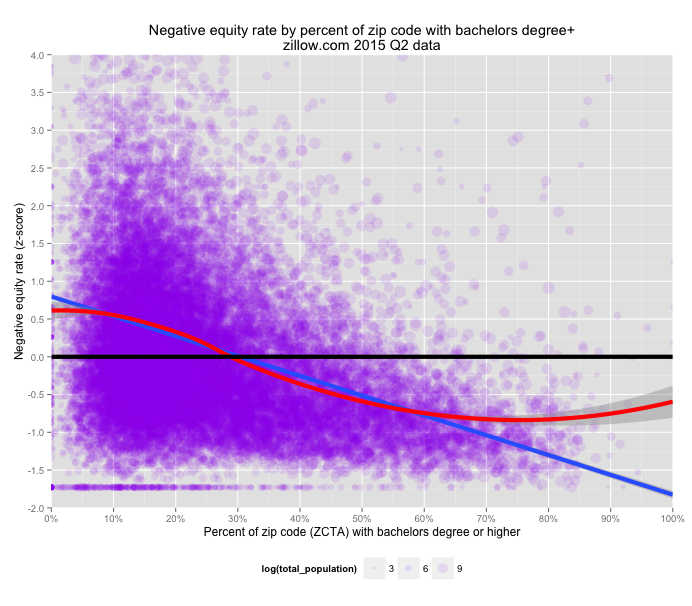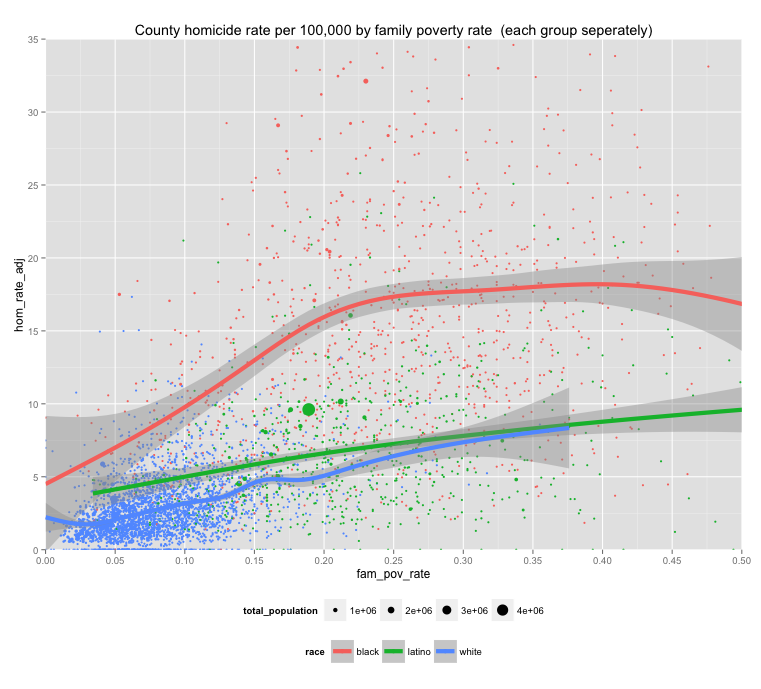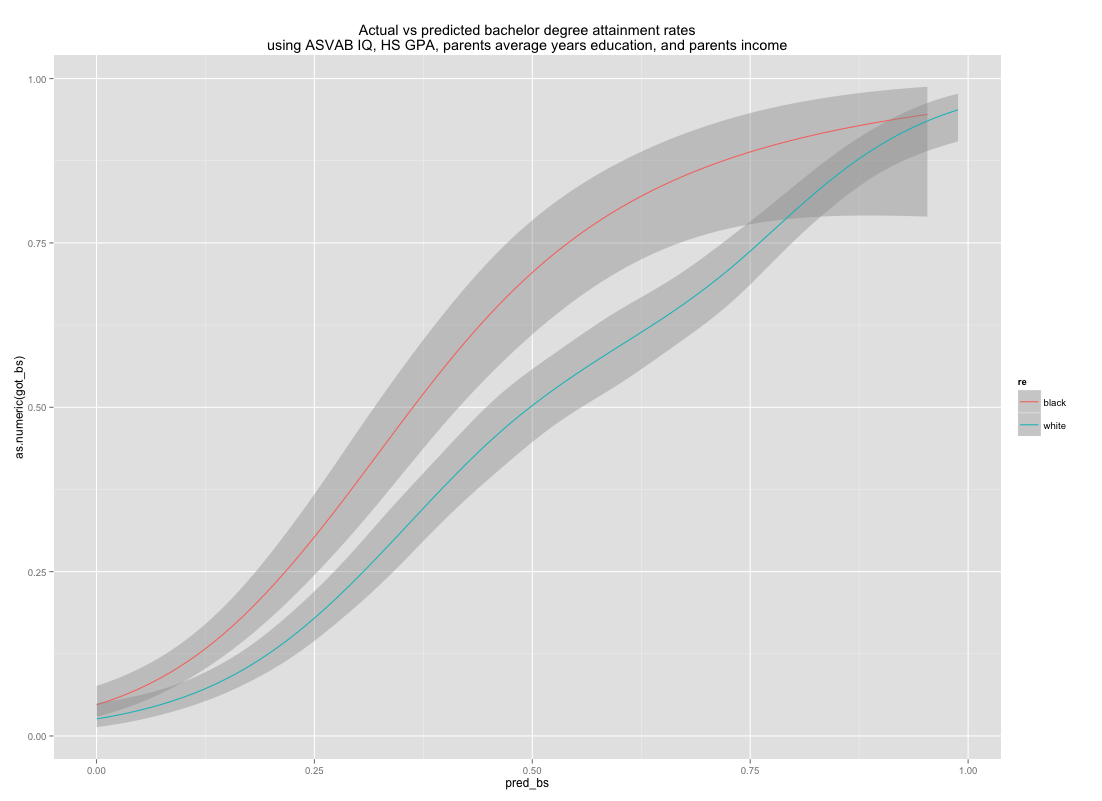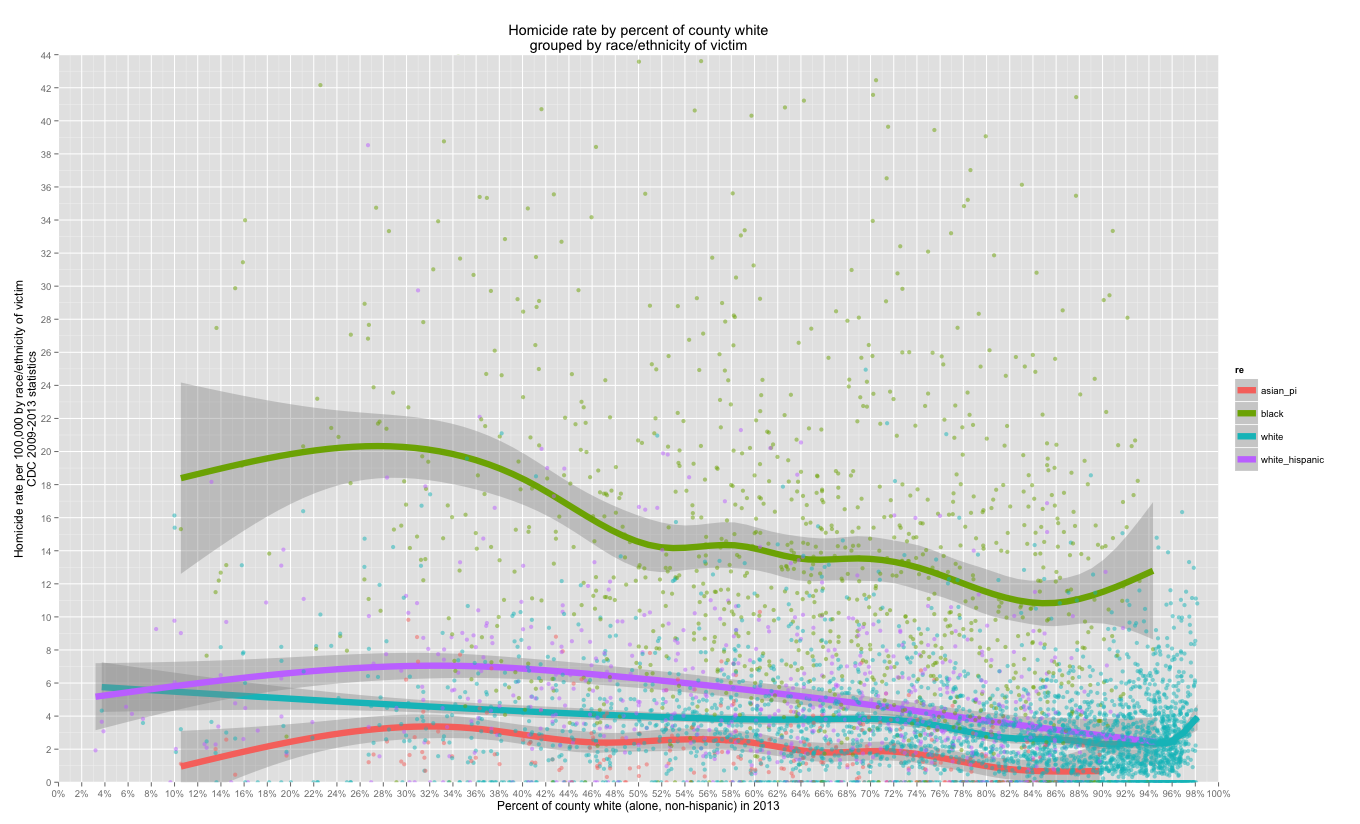I started this post to refute some specific arguments, but I changed my mind midstream and decided to add a lot more material than I initially envisioned. This is best viewed as being akin to a FAQ (Frequently Refuted Objections – FRO?) relating to the standardized tests and their use in higher education.
table of contents
- 1) SAT and income are not perfectly correlated
- 2) Income correlates well with lots of tests
- 3) mean GPA, academic rigor, and the significance HSGPA varies with SES
- 4) Even controlling for SES, different racial groups see different average scores
- 5) SES & B-W cognitive gaps start very young and keep growing
- 6) The B-W test score gaps are poorly explained by schools
- 7) The differences in “school quality” are generally overstated
- 8) The SAT’s association with family income is almost entirely mediated by family education
- 8) SES does not significantly mediate the predictive power of the SAT
- 9) Some have misconstrued the Univ. of Calif. data to argue otherwise
- 10) Nor are these tests biased against minorities
- 11) The predictive power of the SAT is vastly under-estimated
- 12) The strength of this prediction does not weaken past freshman year
- 13) Holding HSGPA constant the SAT offers significant incremental validity
- 14) The SAT is well correlated with IQ tests
- 15) Lumosity’s cognitive tests show strong correlations with SAT across universities
- 16) SAT test prep has little effect
- 17) Test prep rates do not vary all that much
- 18) SATs predict graduation rates between schools too
- 19) When schools systematically discount standardized tests the effects are very obvious
- 20) Heritability explains a great deal of these systematic SES relationships
SAT and income are not perfectly correlated
The SAT is certainly modestly correlated with parental income, but it is simply not true that the SAT is nothing more than a measure of family income.
I will briefly plot the 2011 SAT reading scores by income level to illustrate that the r**2 is considerably less than one.
There is significant overlap across the entire income distribution:




















